First of all please consider that for a general matrix the output can be composed of more than one closed loop; for example boundaries of the matrix

form three distinct loops, one of them placed inside another.
To extract these loops the first step is to build a map of all "walls": you have a vertical wall each time the content of one cell is different from the next cell on the same row; you have instead an horizontal wall when the content is different from the same cell in the next row.
data = [[ 0, 0, 0, 0, 0, 0, 0, 0, 0, 0 ],
[ 0, 1, 1, 1, 1, 0, 0, 0, 0, 0 ],
[ 0, 1, 0, 0, 1, 0, 1, 1, 0, 0 ],
[ 0, 1, 0, 0, 1, 0, 1, 1, 1, 0 ],
[ 0, 1, 1, 1, 1, 0, 0, 1, 1, 0 ],
[ 0, 0, 0, 0, 0, 0, 0, 0, 0, 0 ]]
rows = len(data)
cols = len(data[0])
walls = [[2*(data[r][c] != data[r][c+1]) + (data[r][c] != data[r+1][c])
for c in range(cols-1)]
for r in range(rows-1)]
In the example above I'm using two bits: 0x01 to mark horizontal walls and 0x02 to mark vertical walls. For a given (r, c) cell the walls are the right and bottom wall of the cell.
For simplicity I'm also assuming that the interesting areas are not touching the limits of the matrix; this can be solved by either adding extra rows and cols of zeros or by wrapping matrix access in a function that returns 0 for out-of-matrix virtual elements.
To build the list of boundaries you need to simply start from any point on a wall and move following walls, removing the walls from the map as you process them. When you cannot move any more a cycle has been completed (you're guaranteed to complete cycles because in a graph built in this way from a matrix of inside/outside flags the degree is guaranteed to be even in all vertices).
Filling all those cycles simultaneously using odd-even filling rules is also guaranteed to reproduce the original matrix.
In the code following I'm using r and c as row/col index and i and j instead to represent points on the boundary... for example for cell (r=3, c=2) the schema is:

where the red wall corresponds to bit 0x02 and the green wall to bit 0x01. The walls matrix has one row and one column less than the original data matrix because it's assumed that no walls can be present on last row or column.
result = []
for r in range(rows-1):
for c in range(cols-1):
if walls[r][c] & 1:
i, j = r+1, c
cycle = [(i, j)]
while True:
if i < rows-1 and walls[i][j-1] & 2:
ii, jj = i+1, j
walls[i][j-1] -= 2
elif i > 0 and walls[i-1][j-1] & 2:
ii, jj = i-1, j
walls[i-1][j-1] -= 2
elif j < cols-1 and walls[i-1][j] & 1:
ii, jj = i, j+1
walls[i-1][j] -= 1
elif j > 0 and walls[i-1][j-1] & 1:
ii, jj = i, j-1
walls[i-1][j-1] -= 1
else:
break
i, j = ii, jj
cycle.append((ii, jj))
result.append(cycle)
Basically the code starts from a point on a boundary and the checks if it can move on a wall going up, down, left or right. When it cannot move any more a cycle has been completed and can be added to the final result.
The complexity of the algorithm is O(rows*cols), i.e. it's proportional to the input size and it's optimal (in big-O sense) because you cannot compute the result without at least reading the input. This is easy to see because the body of the while cannot be entered more times than the total number of walls in the map (at each iteration a wall is removed).
Edit
The algorithm can be modified to generate as output only simple cycles (i.e. paths in which each vertex is visited only once).
result = []
index = [[-1] * cols for x in range(rows)]
for r in range(rows-1):
for c in range(cols-1):
if walls[r][c] & 1:
i, j = r+1, c
cycle = [(i, j)]
index[i][j] = 0
while True:
if i > 0 and walls[i-1][j-1] & 2:
ii, jj = i-1, j
walls[i-1][j-1] -= 2
elif j > 0 and walls[i-1][j-1] & 1:
ii, jj = i, j-1
walls[i-1][j-1] -= 1
elif i < rows-1 and walls[i][j-1] & 2:
ii, jj = i+1, j
walls[i][j-1] -= 2
elif j < cols-1 and walls[i-1][j] & 1:
ii, jj = i, j+1
walls[i-1][j] -= 1
else:
break
i, j = ii, jj
cycle.append((ii, jj))
ix = index[i][j]
if ix >= 0:
# closed a loop
result.append(cycle[ix:])
for i_, j_ in cycle[ix:]:
index[i_][j_] = -1
cycle = cycle[:ix+1]
index[i][j] = len(cycle)-1
This is implemented by adding to the output a separate cycle once the same vertex is met twice in the processing (the index table stores for a given i,j point the 0-based index in the current cycle being built).





